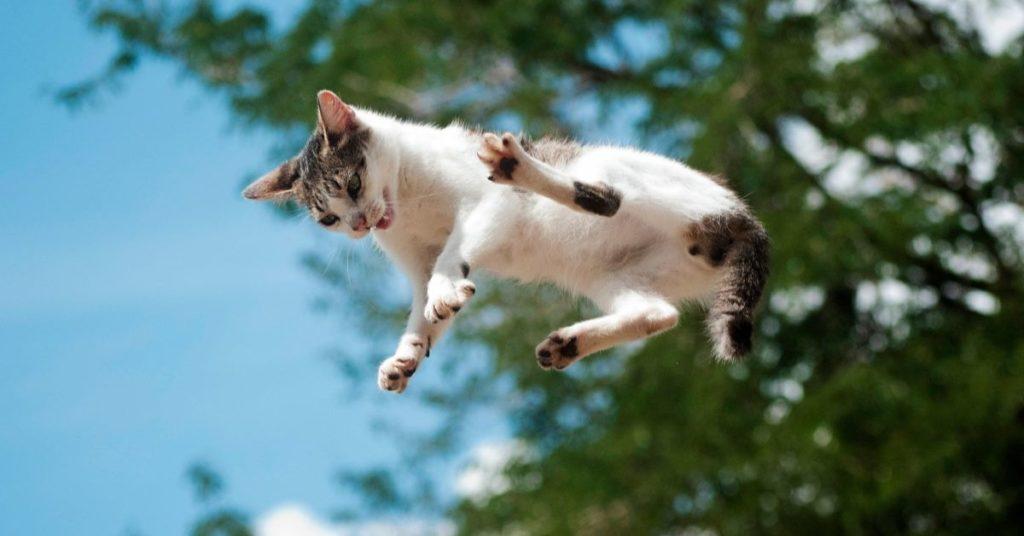It’s a question that scientists have been asking since at least 1700: How do cats manage to land on their feet, even after falling from incredible heights? Unsurprisingly, the physics behind this rather straightforward question is a bit complicated. The simplest way to answer it? Cats have a “righting reflex,” thanks to their acrobat-like bodies and excellent balance system (the inner ear’s vestibular apparatus). However, while cats can stick a landing as impressively as any superhero, they’re not quite as invincible.
A cat’s righting reflex enables it to (1) tell up from down while falling and (2) twist its body mid-fall so that it lands feet first. It’s an ability they master as early as 7 weeks old, complemented by their fine-tuned sense of equilibrium and lightweight, flexible skeletal structure. Additionally, cats don’t have the long, rigid clavicle that humans have. Instead, they have small, free-floating collarbones—the same reason why they have minimal trouble squeezing through tight spaces.
Furthermore, cats have furry bodies and a low body volume-to-weight ratio. These two traits decrease a cat’s terminal velocity, lessening the impact of its fall. You may even notice some cats spreading out their bodies like flying squirrels to slow their descent.
Still, despite their ability to land feet first, falling felines can still sustain serious injuries. A fall from a low height means a smaller time window for a cat to correct its position (and a higher chance of landing on its side instead of its feet). Meanwhile, falling from a great height can damage the cat’s joints permanently. Such a fall may even result in head and body trauma, if the cat’s legs aren’t strong enough to endure the landing.
If you live on a higher floor in your building and you have a pet cat, keep an eye on your feline friend. “Cats have nine lives” is a myth you absolutely don’t want to test.
Still remember your 5th-grade science classes? Test your knowledge and see if you still remember these facts and fundamental concepts in human anatomy, biology, botany, and other branches of science. Click here to try the “Are You Smarter Than A Pinoy Fifth-Grader” Challenge.
Follow the hashtag #FlipFacts on Facebook and Instagram to get your daily dose of science trivia!
References
- http://thescienceexplorer.com/nature/don-t-count-your-cat-land-its-feet-every-time
- https://arstechnica.com/science/2019/12/the-surprisingly-complicated-physics-of-why-cats-always-land-on-their-feet/
- https://www.livescience.com/32117-why-do-cats-land-on-their-feet.html
- https://www.physlink.com/education/askexperts/ae411.cfm
- https://www.sciencefocus.com/science/the-enduring-puzzle-of-why-cats-always-land-on-their-feet/
Author: Mikael Angelo Francisco
Bitten by the science writing bug, Mikael has years of writing and editorial experience under his belt. As the editor-in-chief of FlipScience, Mikael has sworn to help make science more fun and interesting for geeky readers and casual audiences alike.










